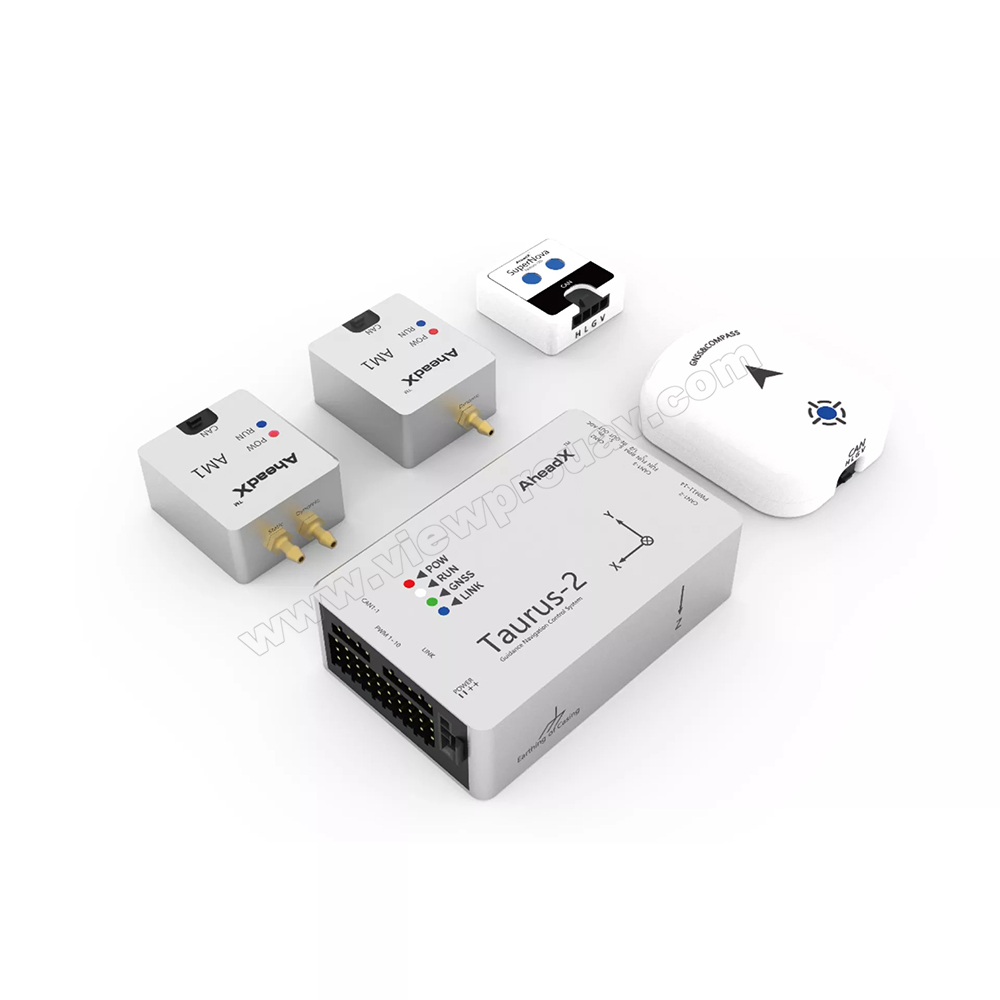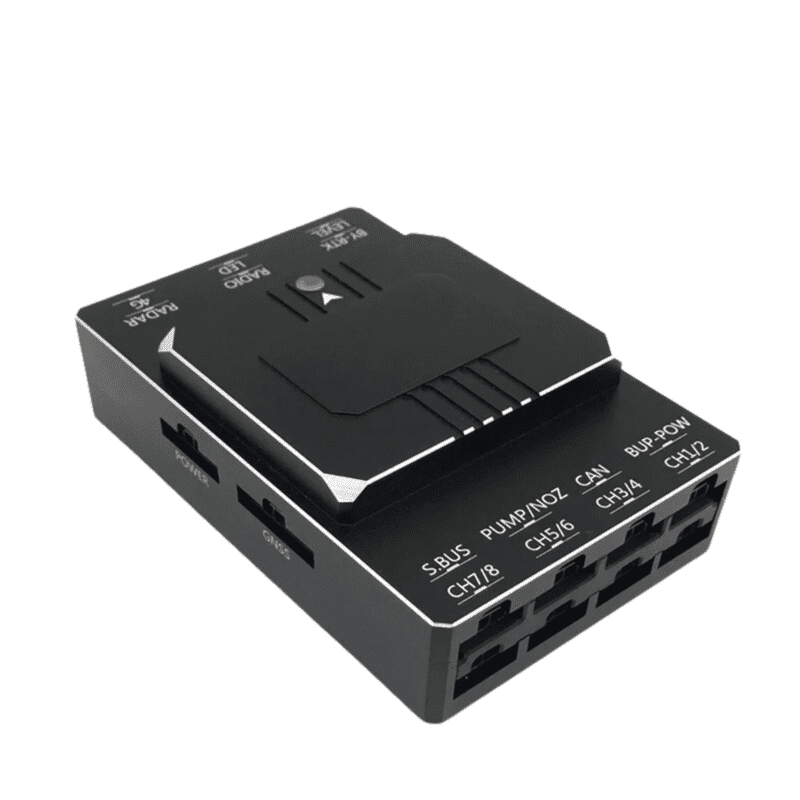Why Select SparkNavi Drone Flight Controller and GNSS/INS Made in Taiwan for Advanced Navigating
Why Select SparkNavi Drone Flight Controller and GNSS/INS Made in Taiwan for Advanced Navigating
Blog Article
The Importance of Drone Trip Controllers in Modern Aerial Technology: Key Elements and Their Impact
In the realm of modern-day airborne innovation, drone flight controllers serve as the pivotal systems that coordinate a drone's performance and abilities. As sectors progressively count on drones for applications varying from farming to security, the advancing modern technology within trip controllers raises essential questions concerning their future impact and prospective improvements.

Overview of Drone Flight Controllers
In the realm of airborne modern technology, drone trip controllers offer as the vital mind of unmanned airborne vehicles (UAVs), making it possible for accurate maneuverability and security throughout flight. These innovative systems incorporate sensor information, processing formulas, and control inputs, permitting drones to perform intricate trip patterns with precision.
Drone trip controllers utilize numerous sensors, such as gyroscopes, accelerometers, and GPS components, to evaluate the UAV's positioning and placement in real-time. This information is crucial for keeping equilibrium and ensuring secure procedure in diverse environmental conditions. The controllers procedure this data to make instantaneous modifications to the drone's electric motors, permitting for smooth transitions and responsive handling.
Moreover, trip controllers are equipped with innovative software application that supports attributes such as waypoint navigating, challenge evasion, and self-governing flight abilities. This software program is crucial for both commercial and recreational applications, where integrity and accuracy are critical. As drone innovation continues to advancement, the advancement of flight controllers will certainly play a crucial duty in improving UAV safety and security, adaptability, and performance, ultimately expanding their applications across various markets.
Secret Components Explained
Comprehending the essential components of drone flight controllers is vital for realizing how these systems run properly. At the heart of a flight controller is the microcontroller, which serves as the mind, processing information from numerous sensing units and performing commands. Important sensing units consist of accelerometers and gyroscopes, which determine the drone's positioning and activity, supplying crucial feedback for stablizing.
One more secret element is the measure, which determines altitude by determining climatic pressure, while GPS components supply positional information, allowing self-governing navigation - SparkNavi drone flight controller and GNSS/INS made in taiwan. The trip controller additionally interfaces with Electronic Rate Controllers (ESCs), which control the rate of the drone's electric motors based on the controller's commands
Interaction components, such as radio receivers, assist in remote input, permitting drivers to send out commands in real-time. Additionally, some trip controllers incorporate software program that can manage intricate formulas for waypoint navigation, trip planning, and telemetry information analysis.
Duty in Trip Stability
Central to preserving flight stability, drone trip controllers make use of innovative formulas to refine sensing unit data and make real-time adjustments. These controllers are geared up with an array of sensors, including gyroscopes, measures, and accelerometers, which continually monitor the drone's alignment, elevation, and speed. By analyzing this information, the flight controller can recognize deviations from the preferred flight course and react quickly to maintain security.
For example, if a drone experiences an unexpected gust of wind, the trip controller can swiftly adjust the electric motor rates to counteract the disruption, making sure a stable flight trajectory. This ability is important not only for hand-operated trip procedures but additionally for performing intricate maneuvers and keeping smooth trip in numerous environmental problems.
.png)
Additionally, the advanced algorithms made use of in flight controllers, such as PID (Proportional-Integral-Derivative) control, enable fine-tuning of the drone's feedback to adjustments in trip problems. By enhancing these control parameters, trip controllers can improve stability, improve responsiveness, and minimize pilot workload. Ultimately, the function of flight controllers in ensuring trip stability is essential for the effective and risk-free procedure of modern drones across varied applications.
Effect On Autonomous Operations

Independent procedures are especially important in diverse applications such as shipment, surveillance, and farming services. With improved trip controllers, drones can autonomously navigate fixed courses, effectively gather data, and adjust to vibrant environments. This capability lowers the demand for consistent human oversight, thus enhancing find out this here functional effectiveness and safety and security.
In addition, the application of device discovering techniques within flight controllers enables drones to improve their efficiency in time by discovering from previous goals. This versatility leads the way for a lot more sophisticated autonomous applications, such as flock technology, where multiple drones coordinate their actions to accomplish a common purpose.
Future Trends in Flight Controllers
Developments in flight controller technology are positioned to revolutionize drone capabilities in the coming years. One considerable fad is the combination of man-made knowledge (AI) and maker discovering algorithms, making it possible for drones to pick up from their settings and make real-time choices. This innovation will useful site certainly improve self-governing navigating, challenge avoidance, and mission planning, significantly improving functional performance and safety and security.
Moreover, the advancement of sophisticated sensor technologies, such as LiDAR and multispectral imaging, will certainly give trip controllers with richer data inputs. This will help with more advanced logical capacities, enabling drones to conduct complex jobs, such as precision rescue, search and farming, and framework inspections with unprecedented precision.
One more emerging pattern is the miniaturization of flight controller parts, which will certainly result in lighter and more portable drones. This development will expand flight durations and haul capacities, making drones more functional for different applications.
Final Thought
To conclude, drone trip controllers act as crucial components in modern airborne innovation, making sure stability and accuracy in ability to move with the integration of microcontrollers, accelerometers, and GPS components. SparkNavi drone flight controller and GNSS/INS made in taiwan. Their capacity to make it possible for autonomous procedures and adapt to different applications highlights their relevance throughout several markets. As improvements in fabricated knowledge and sensing unit modern technology remain to arise, the possibility for boosted abilities and enhanced operational efficiency in drone systems will likely reshape the future of airborne applications
Central to keeping trip security, drone flight controllers make use of sophisticated formulas to process sensor data and make real-time changes. By translating this data, the flight controller can determine deviations from the desired trip course and respond quickly to preserve stability.
Furthermore, the advanced formulas utilized in flight controllers, such as PID (Proportional-Integral-Derivative) control, permit for fine-tuning of the drone's action to adjustments in trip problems. Ultimately, the role of flight controllers check here in guaranteeing trip security is important for the safe and reliable procedure of contemporary drones across diverse applications.
The innovations in drone trip controllers not just improve flight security however additionally significantly affect self-governing procedures. SparkNavi drone flight controller and GNSS/INS made in taiwan.
Report this page